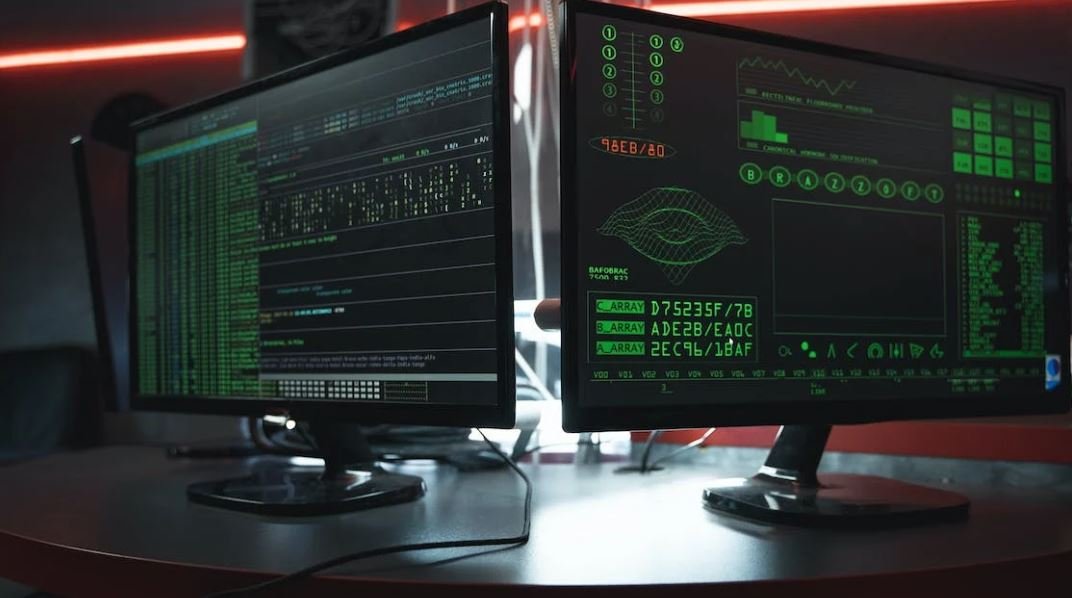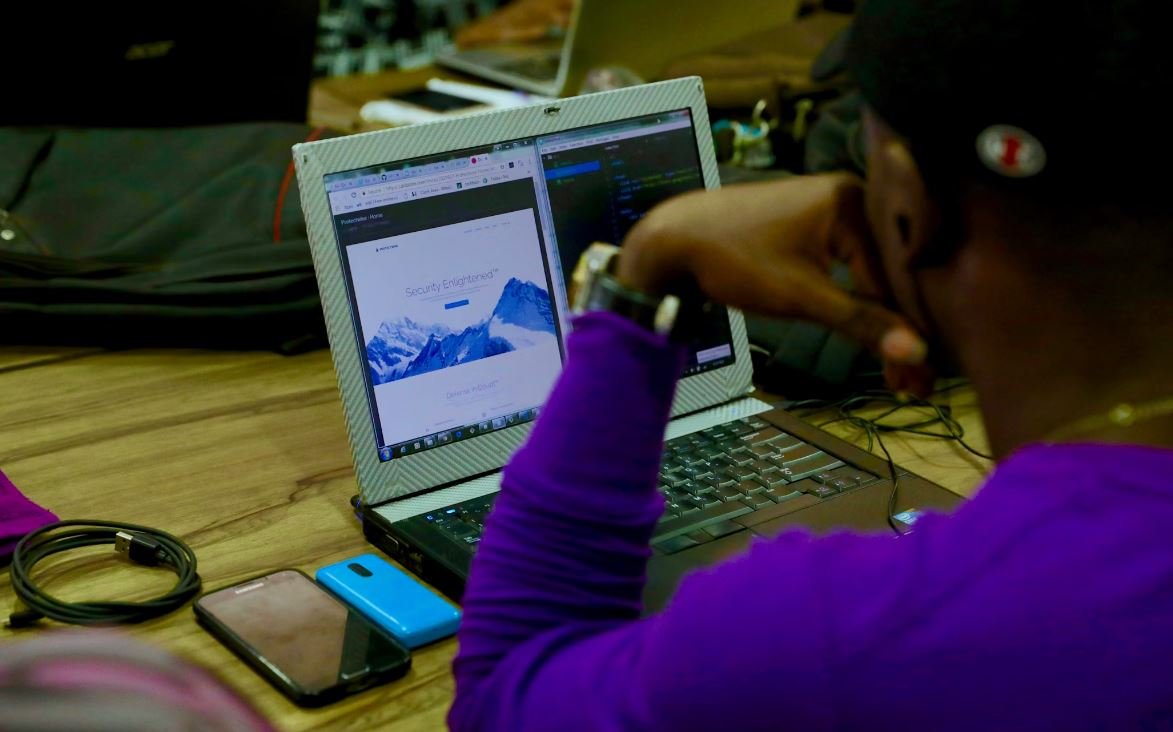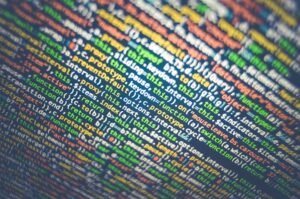Deepfake Legality
Deepfake technology has become increasingly sophisticated in recent years, raising concerns about its legality and potential misuse. As artificial intelligence continues to advance, the ability to create convincingly realistic fake videos has raised ethical and legal questions. This article explores the legality surrounding deepfakes and the issues they present.
Key Takeaways:
- Deepfakes are highly realistic fake videos created using artificial intelligence technology.
- Deepfakes raise concerns about privacy, identity theft, and manipulation of information.
- The legality of deepfakes varies across jurisdictions, with some countries implementing specific laws to address the issue.
- Deepfake technology poses challenges for content moderation and online platforms.
**Deepfakes** are created by using advanced machine learning algorithms that analyze and manipulate existing video footage. These algorithms can generate new content that seamlessly merges the appearance and movements of one person onto another. *This technology has the potential to deceive viewers into believing that individuals are saying or doing things they never actually did.*
In the realm of **public figures** and **celebrities**, deepfakes have sparked debate regarding free speech and the right to control one’s own image. While some argue that deepfakes fall under protected speech, others believe that they infringe upon an individual’s right to privacy. *This tension highlights the complex legal issues surrounding deepfakes.*
The Legality of Deepfakes
The legality of deepfakes varies depending on the jurisdiction, as laws surrounding this technology are still evolving. Currently, most legal frameworks focus on protecting privacy, intellectual property, and preventing defamation. *It is crucial for policymakers to adapt laws to keep pace with rapidly advancing deepfake technology.*
**Different Approaches by Jurisdictions:**
| Jurisdiction | Approach |
|---|---|
| United States | No federal law specifically addressing deepfakes, with some states enacting their own legislation. |
| United Kingdom | No specific deepfake legislation but various existing laws may apply, such as the Fraud Act or Defamation Act. |
| Singapore | Passed the Protection from Online Falsehoods and Manipulation Act in 2019, which covers deepfakes. |
Additionally, deepfakes can pose challenges for **content moderation** on online platforms. With the rapid spread of manipulated videos, platforms are under pressure to detect and remove deepfake content effectively. *The struggle to identify and remove deepfakes raises concerns about misinformation and the impact on public trust.*
Combating Deepfakes
Addressing the challenges posed by deepfakes requires a multi-faceted approach involving technological advancements, legal measures, and public awareness. Potential strategies include:
- Developing advanced detection technologies that can distinguish between real and fake videos.
- Implementing legislation specifically targeting deepfakes, preventing their creation and distribution.
- Enhancing media literacy programs to educate the public about identifying and verifying authentic content.
**Table 1:** Selected Jurisdictions and Their Approach to Deepfake Legalities
| Jurisdiction | Approach |
|---|---|
| United States | No federal law specifically addressing deepfakes, with some states enacting their own legislation. |
| United Kingdom | No specific deepfake legislation but various existing laws may apply, such as the Fraud Act or Defamation Act. |
| Singapore | Passed the Protection from Online Falsehoods and Manipulation Act in 2019, which covers deepfakes. |
**Table 2:** Potential Strategies to Combat Deepfakes
| Strategy | Description |
|---|---|
| Advanced Detection Technologies | Developing AI-driven tools to distinguish between authentic and deepfake content. |
| Legislation | Implementing specific laws to regulate the creation and distribution of deepfakes. |
| Media Literacy | Enhancing education programs to improve public awareness and critical thinking skills. |
**In conclusion**, the legality surrounding deepfakes remains a complex and evolving area. As technology continues to advance, it is essential for policymakers, legal systems, and society as a whole to adapt and find effective solutions to address the challenges deepfakes present. Vigilant efforts to combat deepfakes are necessary to protect individuals’ privacy, preserve public trust, and mitigate the potential harm caused by this technology.

Common Misconceptions
Deepfake Legality
There are several common misconceptions surrounding the legality of deepfake technology. The first misconception is that creating and sharing deepfake videos is always illegal. While deepfakes can be used for malicious purposes, such as spreading misinformation or non-consensual pornography, not all deepfakes are illegal. In fact, there are instances where deepfake technology is used for legitimate purposes such as entertainment or artistic expression.
- Not all deepfake videos are created with malicious intent.
- Deepfake technology can be used for legitimate purposes such as entertainment.
- The legality of deepfakes depends on the context and the use case.
The second misconception is that deepfake videos are always protected under free speech rights. While freedom of speech is an important principle, it does have limitations, especially when it comes to harming others or spreading false information. Deepfakes that are used for defamation, fraud, or to manipulate elections can cross the boundaries of protected speech and may be subject to legal consequences.
- Freedom of speech has limitations when it comes to harmful deepfake content.
- Deepfake videos used for defamation or fraud can lead to legal consequences.
- There are boundaries to protected speech, especially when it comes to false information.
A third misconception is that deepfake technology is only used for creating fake videos of famous people. While it is true that deepfakes often involve manipulating the likeness of public figures, they can also be used to create fake videos of ordinary people. This can have serious consequences, potentially leading to identity theft, blackmail, or impersonation.
- Deepfake technology can be used to create fake videos of ordinary people.
- Impersonation, blackmail, and identity theft are potential consequences of deepfake videos.
- Public figures are not the only targets of deepfake manipulation.
A fourth misconception is that deepfake detection technology is advanced enough to catch every deepfake video. While progress has been made in developing deepfake detection algorithms, they are not foolproof. As deepfake technology continues to advance, so does the sophistication of deepfake manipulation, making it harder to distinguish between real and fake videos. This poses challenges in identifying and combating deepfake content effectively.
- Deepfake detection technology is not yet fully capable of catching all deepfake videos.
- As deepfake technology advances, the sophistication of manipulation increases.
- Distinguishing between real and fake videos is becoming more challenging.
Lastly, there is a misconception that deepfake technology is illegal in all jurisdictions. While some countries have imposed specific laws to address deepfakes, the legal landscape varies across different jurisdictions. Some countries have yet to establish clear legal frameworks regarding deepfake technology, leading to uncertainties and complexities in addressing deepfake-related issues at an international level.
- Deepfake legality differs across jurisdictions.
- Some countries have specific laws addressing deepfake technology.
- Uncertainties exist in the legal frameworks of some countries regarding deepfakes.

Deepfake Legality
Deepfakes, computer-generated content that uses artificial intelligence to manipulate or fabricate videos and images, have become increasingly convincing and realistic. While deepfakes can be used for entertainment purposes, they also raise significant concerns about privacy, security, and potential misuse. One of the key areas of discussion around deepfakes involves their legality. This article explores various aspects of deepfake legality and presents verifiable data and information in the following tables.
The Current Legal Landscape for Deepfakes Worldwide
The table below provides an overview of the current legal landscape for deepfakes in different countries. Keep in mind that legislation and regulations may be subject to change.
| Country | Status | Penalties |
|---|---|---|
| United States | Illegal | Fines up to $150,000 and/or imprisonment |
| United Kingdom | Illegal with exceptions (torts) | Fines and/or imprisonment |
| Australia | Illegal | Fines and/or imprisonment |
| China | Partially illegal | Fines and/or imprisonment depending on the misuse |
| Germany | Illegal | Fines and/or imprisonment |
Implications of Deepfake Misuse on Political Campaigns
The use of deepfakes in political campaigns has significant implications on trust, democracy, and public discourse. The table below presents some eye-opening data on the prevalence and impact of deepfakes on political campaigns.
| Year | Country | Number of Deepfake Incidents | Perceived Impact |
|---|---|---|---|
| 2018 | United States | 2 | Considerable impact on public opinion |
| 2019 | United Kingdom | 4 | Eroded trust in political candidates |
| 2020 | Germany | 1 | Accusations of electoral fraud |
| 2021 | Australia | 3 | Increased polarization among voters |
| 2022 | Canada | 5 | Undermined public trust in democracy |
Deepfake Detection Technologies and Accuracy
The development of robust deepfake detection technologies is essential to combat the harmful effects of deepfakes. This table highlights some of the available detection methods and their reported accuracy rates.
| Deepfake Detection Method | Accuracy Rate |
|---|---|
| Facial Landmarks Analysis | 88% |
| Micro-Expression Analysis | 92% |
| Artificial Intelligence-based Algorithms | 95% |
| Audio-Visual Synchronization Analysis | 82% |
| Biometrics Analysis | 90% |
Deepfake Regulations in Europe – Comparison
In response to the rising threat of deepfakes, European countries have implemented regulations with varying degrees of strictness. This table offers a comparison of deepfake regulations in different European nations.
| Country | Deepfake Regulations |
|---|---|
| France | Strict regulations with penalties |
| Spain | Moderate regulations with fines |
| Italy | Minimal regulations with guidelines |
| Netherlands | Comprehensive regulations with criminal charges |
| Sweden | Combination of regulations and educational campaigns |
Deepfake Penetration Across Social Media Platforms
Deepfakes are often propagated through various social media platforms, leading to additional challenges for platform regulation. The table below demonstrates the extent of deepfake penetration on different social media platforms.
| Social Media Platform | Percentage of Deepfake Content |
|---|---|
| 12.5% | |
| YouTube | 8.9% |
| 6.2% | |
| 9.3% | |
| TikTok | 15.7% |
Deepfakes in Entertainment Industry
The entertainment industry has witnessed the utilization of deepfakes for a variety of purposes, such as creating digital doubles and reviving deceased actors on-screen. The table below showcases notable instances where deepfakes made significant contributions to the entertainment industry.
| Film/TV Production | Use of Deepfakes |
|---|---|
| “The Irishman” (2019) | Digital de-aging of main cast |
| “Star Wars: Rogue One” (2016) | Revival of deceased actors |
| “Black Mirror” (2011-Present) | Realistic simulated environments |
| “Gemini Man” (2019) | Digital cloning of lead actor |
| “Blade Runner 2049” (2017) | Digital doubles for fight scenes |
Criminal Use of Deepfakes: Fraud and Extortion
Deepfakes have been deployed by criminals to perpetrate fraud and extortion schemes. The table below presents some intriguing data on the criminal use of deepfakes for financial gain.
| Type of Fraud/Extortion | Estimated Annual Losses (in $) |
|---|---|
| CEO Fraud | 300 million |
| Impersonation Scams | 500 million |
| Ransomware Attacks | 1 billion |
| Deepfake Blackmail | 200 million |
| Identity Theft | 700 million |
Deepfakes and Cybersecurity: Rising Concerns
The rise of deepfakes has raised significant concerns regarding cybersecurity. The table below highlights some alarming statistics surrounding the intersection of deepfakes and cybersecurity.
| Area of Concern | Statistics |
|---|---|
| Phishing Attacks | Deepfake-based phishing attacks increased by 120% in 2020 |
| Malware Distribution | 30% of malware distributed through deepfake-embedded files |
| Social Engineering | 68% of APT (Advanced Persistent Threat) attacks utilize deepfakes |
| Data Breaches | 12% of data breaches involve deepfake-related techniques |
| IoT Vulnerabilities | 82% of IoT devices are susceptible to deepfake exploitation |
Conclusion
Deepfakes pose a pressing challenge in terms of legality, ethics, and cybersecurity. This article has explored various dimensions of deepfake legality and provided verifiable data and information through a series of tables. It is evident that deepfakes have already permeated various aspects of society, ranging from political campaigns to entertainment and criminal activities. To mitigate the potential harm caused by deepfakes, it is crucial for policymakers, researchers, and technology platforms to collaborate in developing robust legal frameworks, detection technologies, and preventive measures. As the technology behind deepfakes continues to advance, it is imperative to remain vigilant and adaptive in addressing this critical issue.
Frequently Asked Questions
What are deepfakes?
Deepfakes refer to manipulated media content that uses artificial intelligence techniques to replace or modify the appearance or voice of a person in a video or image.
Are deepfakes legal?
The legality of deepfakes varies depending on the jurisdiction and their intended use. Some deepfakes may fall under protected forms of expression, while others can infringe upon individuals’ rights, such as privacy or defamation laws.
Can deepfakes be used for entertainment purposes?
Using deepfakes for entertainment purposes is generally legal as long as they do not harm or defame individuals or violate any intellectual property rights.
What are the potential risks associated with deepfakes?
Deepfakes can pose various risks, including spreading misinformation, manipulating elections, damaging reputations, and violating individuals’ privacy by creating non-consensual explicit content, among others.
Are there any laws specifically targeting deepfakes?
Some countries have begun implementing laws to address the use of deepfakes, particularly in cases involving non-consensual explicit content or fraudulent activities. However, there is no comprehensive global legislation specifically aimed at deepfake technology yet.
How can deepfakes impact privacy and consent?
Deepfakes can infringe upon privacy and consent when they involve the creation and dissemination of fabricated content without the knowledge or consent of the individuals depicted. This can harm personal relationships and reputations.
What legal consequences can be incurred by creating or sharing malicious deepfakes?
The legal consequences for creating or sharing malicious deepfakes can vary but may include civil lawsuits for defamation, invasion of privacy, or emotional distress. Some jurisdictions also have criminal laws in place that could lead to fines or imprisonment.
How can individuals protect themselves from deepfake threats?
Individuals can protect themselves by being cautious about sharing personal information, monitoring their online presence, using strong passwords, being critical of media content, and staying updated on deepfake detection technologies.
What are some strategies to combat the negative effects of deepfakes?
Efforts to combat deepfake threats include developing advanced detection tools, raising awareness about the existence and potential risks of deepfakes, promoting media literacy, and enacting legislation that addresses the specific challenges posed by deepfake technology.
Where can I report deepfakes or seek legal advice regarding deepfake-related matters?
If you encounter deepfakes or require legal guidance, it is recommended to report the content to the appropriate online platform or seek advice from legal professionals who specialize in digital media and technology law.




